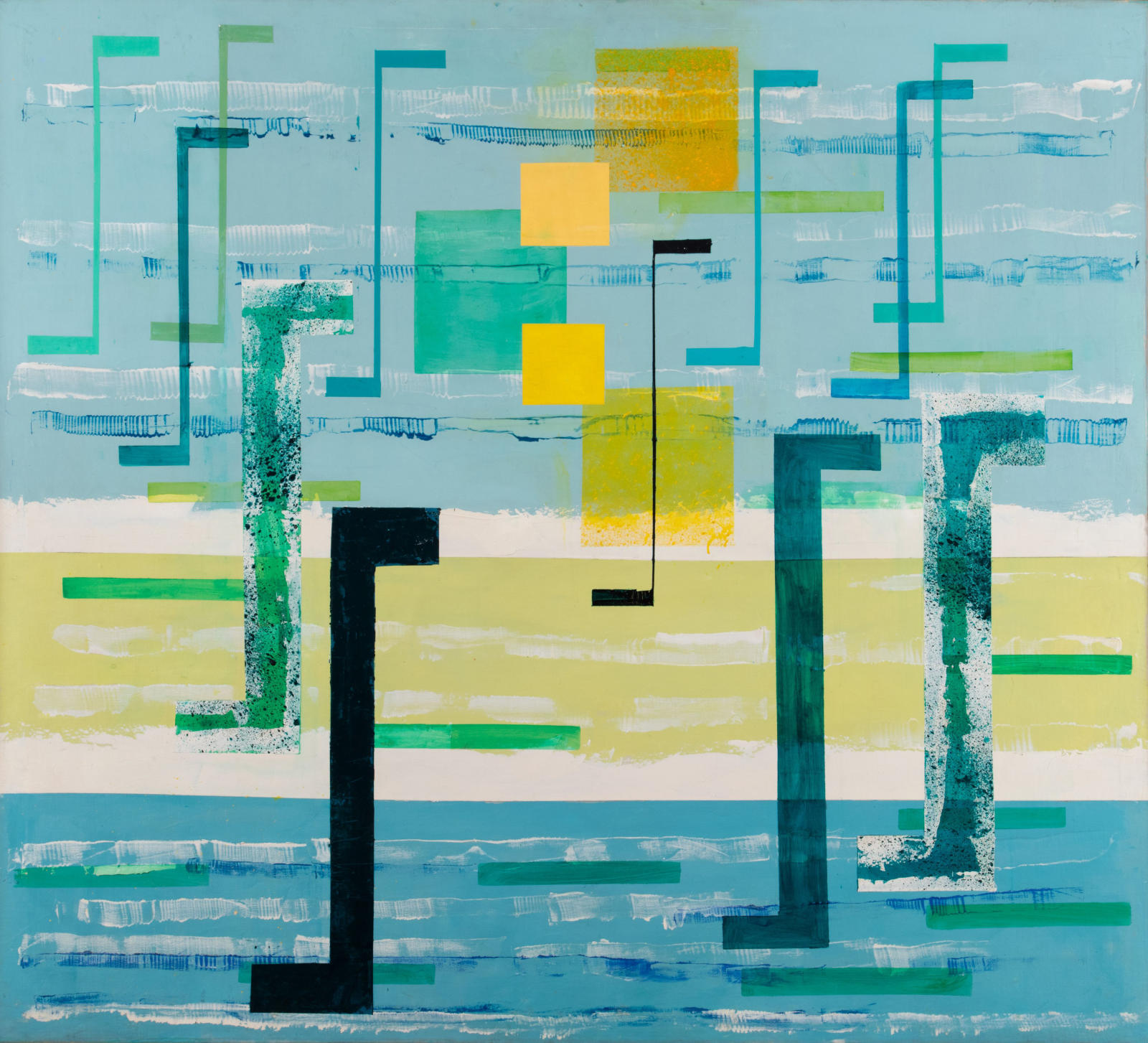


Framed: 52 1/4 x 58 1/4 inches
artist
Irene Rice Pereira (1901–1971) was an abstract artist whose work reflected an interest in light, space and mysticism. She began her studies at the Art Students League from 1927-30 and then traveled to Acadamie Moderne, Paris for her last year of schooling. Becoming bored with the traditional academicism at the Acadamie, Pereira left for the Sahara Desert. There she encountered her first “vision of eternity”, which she attempted to incorporate throughout her artistic career.
Pereira moved back to New York City in 1932 and painted canvases based on the relationship between man and machine. Her first show was the following year at the ACA Gallery. Pereira experimented with nontraditional materials frequently and by the late ’30d she was painting on plastics and glass, adding marble dust to her pigments. During the thirties, she taught at the WPA’s Design library, bestowing many students with the influence of the Bauhaus School. In the 1940s, created multimedia paintings, superimposing layers of glass to explore the effects of resonating light.
By 1947, Pereira had mostly finished her pioneering experiments with coruscated and layered glass and had moved onto more complex oil canvases. The best examples of this later style are Green Mass at The National Gallery of Art and Mecca at the National Museum of American Art.
- biography courtesy of Djelloul Marbrook and The Caldwell Gallery, Manilus, NY
Description
Spirit of Marcurius is a contemplative horizontal composition that showcases Irene Rice Pereira’s continued exploration of abstraction through geometry, light, and metaphysical symbolism. Departing from her warmer palettes, this work is defined by a cooler range of teals, deep blacks, and layered bands of blue and yellow green that suggest an atmospheric horizon. The horizontal format and implied landscape lend the painting a serene, almost otherworldly quality, as if capturing a moment of equilibrium between sky and earth, matter and energy.
The title Spirit of Marcurius evokes a sense of alchemical or cosmic presence, potentially referencing the mythical or philosophical figure Mercury (or Mercurius), often associated with transformation, duality, and the merging of opposites. In this context, the painting becomes a visual meditation on balance, between cool and warm, structure and atmosphere, intellect and spirit. It is a resonant example of Pereira’s ability to infuse abstract form with layered meaning and quiet transcendence.


